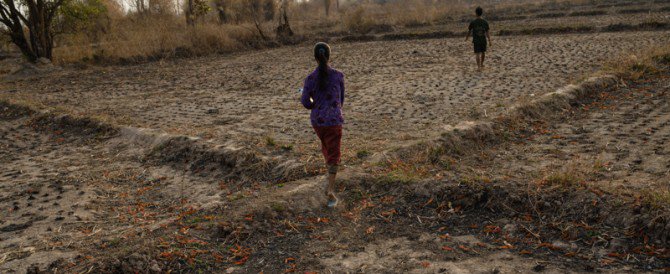In an unusually frank exchange in the Lao National Assembly this week, the head of the government’s Inspection Authority pointed to a US$ 150 million hole in state coffers – the cost of corruption since 2012.
Lao officials are colluding and bribing to embezzle public funds, Bounthong Chitmany told a room full of parliamentarians, and getting rich by selling off state-owned land and illegally logging forests.
US$ 150 million is a huge amount of money by anyone’s standards, but particularly for Laos – a country ranked 139thout of 187 in the UN’s Human Development Index. For perspective, it would take 37,500 years for a Lao citizen on average earnings of US$ 4000 per annum to earn that amount.

Watching business and political elites syphon off badly-needed revenues from natural resources is sadly nothing new for the people of Laos. This largely rural country saw a fifty-fold increase in the number of land deals between 2000 and 2009. The latest figure for land leased to foreign investors is as much as 1.1 million hectares, an area 1.5 times the size of Singapore.
This looting has left deep scars on Laos’ landscapes. Once covered in dense forest, the country’s forest cover has plummeted from 71 per cent of total land mass in 1960 to just over 40 per cent in 2010.
As in many poor countries, in Laos land grabbing and forest destruction are two sides of the same coin. Companies grab land to access valuable timber, and once forests are cleared industries like rubber or palm oil move in.
Global Witness’ 2013 report Rubber Barons revealed, for example, how cosy ties with Lao politicians had enabled two of Vietnam’s largest rubber companies to grab thousands of hectares of community land and clear large swathes of forest. Robbed of the environment that had sustained them for generations, whole communities were driven deeper into poverty.
The Lao government has said that it is trying to clamp down on illegal activities like these to protect rural communities from loggers and land grabbers. In June 2012, it called a moratorium on new land sales for rubber plantations. Stating its objective to restore forest cover to 70 percent by 2020, the government recently launched a pilot schemeto combat illegal logging and has called for local communities to get involved in reporting illegal activities. New land and forest policies are also being devised.
The trouble is that too often in this secretive and authoritarian one-party state, vested interests trump all other considerations, laws are routinely flouted and the country’s political and business elite operate with impunity.
Those brave enough to speak out against the plunder of Laos’ land and forests are dealt with harshly by the authorities. There is no free press and a muted civil society is still reeling from the enforced disappearance of Sombath Somphone, Laos’ most famous development worker, in December 2012. Mirroring the global situation, being an environmental defender in Laos has become increasingly dangerous in recent years and the government urgently needs to put a protection plan in place. But until Laos lifts its shroud of secrecy, laws and plans will carry on being ignored by the country’s elites and land grabbing and logging will continue unabated.
Lasting change can only happen if there is an end to the secrecy around the allocation and management of Laos’ natural resources, and the persecution of those who stand up to defend them. In particular, the government must make public all documentation relating to land and forest concessions, enabling local communities to seek justice from those responsible for their mismanagement. Otherwise, corrupt officials will continue to get away with it.